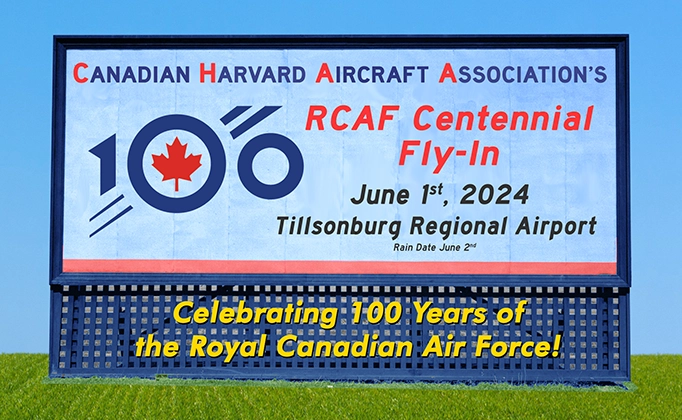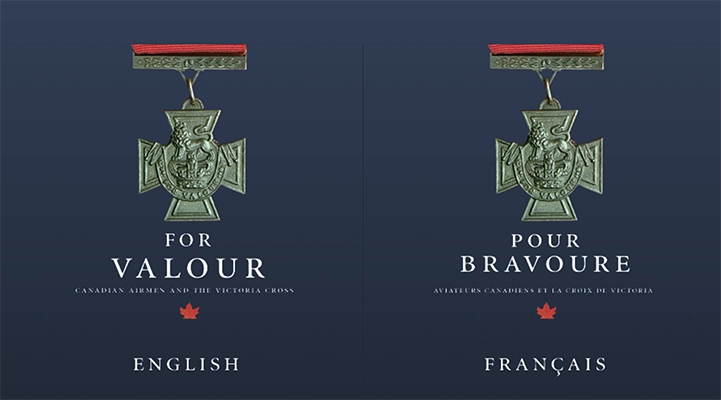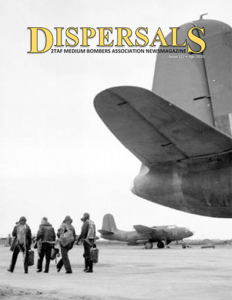Pathway to the Stars is the first of several books that will celebrate the RCAF’s 2024 Centennial is now available from CANAV. Pathway to the Stars is a 264-page, large-format, hard-cover rich in text and photos produced by the RCAF Foundation. If your interest is RCAF history, you’ll definitely want this major production, especially if you already have the 1984 Sixty Years and Canada’s Air Force at War and Peace series. Order from CANAV Books at larry@canavbooks.com. Get in on the ground floor! USA and overseas orders CAD $72.00 all-in, surface mail.
Meanwhile, here at CANAV we’re still beavering away at our own RCAF Centennial book which is due off the press for the RCAF Centennial in April 2024. If you have our Sixty Years from 40 years ago (and about 20,000 do), you’ll know what to expect with this spectacular production. What you’ll get is the very best – no other book will come close with the wide sweep of topics and depth of treatment. CANAV’s will be authoritative and beautifully produced – our two chief hallmarks. That said, real fans will want all the forthcoming RCAF 1924 – 2024 titles on your bookshelf. Each will shed new light on this huge story, which no single book can cover 100%.
Juno: Canadians at D-Day, June 6, 1944
On June 6, 1944, nearly 15,000 Canadians — at sea, in the air and on the ground — joined the long-anticipated D-Day invasion of Nazi-occupied Europe on the Normandy beaches. The piece of ground on which the Canadians fought so hard against heavily armed and embedded German troops was codenamed Juno. On that day, the Canadian infantry fought their way farther inland than any other Allied troops. For Canada, and all Canadians, this was a coming of age,
an extraordinary moment of courage and sacrifice. Barris takes us back to those momentous few hours that forever changed the course of our history in the voices of those who were there. In what might be described as Canada’s longest day, we follow the course of action hour by hour, minute by minute, as we meet and follow the soldiers who leapt off landing craft into the shallow waters off Normandy, who were strafed by machine gun fire before they could even reach the shore. We meet the airmen who flew fighters and bombers in the early hours of the summer morning, as well as the sailors who manned the guns of the ships offshore [ More info … ]
Thank you for your service
Folded Wings
Philip Gray (CAHS # 5153) passed away suddenly on October 16, 2013 at his home in Etobicoke, Ontario. He was born in Ladybank, Fife, Scotland. He attended Kirkcaldy High School to 4th year, where he was the Junior Sports Champion in 1936. Philip joined the RAF in 1942 after walking into a recruiting centre in Dundee. After extensive flight training over the period of a year at Falcon Field, Arizona, USA he returned to the UK.
Upon returning he was posted to 186 Heavy Bomber Squadron at Stradishall where he assembled his “Clueless” crew. At the age of 21 he was now the pilot of a Lancaster Bomber and responsible for a crew of 7. He flew 16 combat missions deep into the heart of Germany, dodging deadly night fighters and the ever present anti-aircraft guns. Philip was later posted to 622 Squadron Mildenhall where his duties included dropping food to the people of The Netherlands under “Operation Manna” and flying back prisoners of war from France to England under “Operation Exodus”. [ More info … ]
Audio available
Movie courtesy – Don Riep
Ross Lennox (CAHS # 3690) was born Christmas day 1922 and passed away peacefully on November 1, 2013. Ross’ aviation career spanned over six decades starting in 1941 as a WWII flight instructor. Ross made several significant contributions to Canadian aviation history. He was the only pilot to fly all of Canada’s Sea King helicopter fleet and he completed the first unescorted trans-Atlantic helicopter crossing in 1965. He retired from Pratt & Whitney Canada (PWC) in 1982 as Chief Test Pilot. He was a sports enthusiast, an avid curler and at 85, went skydiving. Ross generously supported many charities but latterly focused on the Alzheimer’s Society in loving memory of his wife Gladys. A gift to the Toronto Alzheimer’s Society would be greatly appreciated by the family. Ross was an inspiration to everyone that he met and will be dearly missed by all. Files from the Ottawa Citizen, Chapter files.
The Merlin Engine
The development of what was to become the Merlin was inspired by a prestigious marine aviation competition commonly known as the Schneider Trophy. In 1913, French businessman Jacques Schneider offered a 1000-pound prize to the fastest plane to fly a closed circuit with two loops and two returns over 400 kilometers. The first nation to win three consecutive races would keep the trophy in perpetuity. England had some success in these competitions, winning the 1914 and 1922 events, but was upset in 1923 and 1925 by American entries using Curtiss biplanes and engines. England would return to glory, spurred on by the efforts of a new young British aeronautical engineer, R.J. Mitchell. He was working for Supermarine Aviation Works, a relatively small company until acquired by Vickers in 1928. The United Kingdom took the 1927 Schneider Trophy flying a Mitchell-designed Supermarine S.5 powered by the Napier Lion engine. Keith stated the Wblock engine produced 890 horsepower, and was likely in production longer than any other aero engine, from 1917 right up until the 1930s. [ More info … ]
The contents of this article were originally presented to the CAHS Toronto Chapter at a meeting on October 22, 2011. All material has been edited and adapted for this website.
Home Front - Canada
Canadian Aircraft Detection Corps
In the early spring of 1945, crewmen of Hitler’s Navy came ashore at Nova Scotia’s Sable Island — a lonely, windswept place in the North Atlantic. The young lighthouse keeper in charge that night watched in disbelief as an officer of the German submarine approached in the darkness in full uniform, followed by three armed submariners. Not a word was spoken. The officer examined his logbook while the others searched the lighthouse, not waking the two lightkeepers asleep upstairs. Then they left. The duty lighthouse keeper, who was only 18, was shaking when he told his friends about the incident. They refused to believe his story until he took them the next day to the shore, where he showed them the marks left by the German dinghy when it was dragged across the sand. [ More info … ]
Japanese Balloon Bombs
Plane Spotting & Aircraft Identification
Canadian Wartime Radio
L for Lanky
Alan Savage, one of Canada’s outstanding radio producers, directed the “L for Lanky” show. In the picture above he is seen timing the script at rehearsal. “L for Lanky”, which came to CKY via the CBC network, will again be sponsored by the Canadian Marconi Company when the series is resumed next season. Flying Officer Walter (Rocky) Sherk, D.F.C. and Bar, of the Royal Canadian Air Force, is pictured with Maurice Rapkin during an interview on the programme. The gold wings worn by F/O Sherk just below his ribbons indicate that while “on ops” he belonged to a famous Pathfinder Squadron. While Alan Savage handled the production duties, writer Don Bassett took true “war stories” and implanted them on the fictional bomber, “L for Lanky”. The show was very successful. The cast members included Jack Fuller, Jules Upton, George Murray (the tenor), Herb Gott, Art Martin and Vincent Tovell.
Above content dates to 1944 – Courtesy www.americanradiohistory.com
Dispatches from the Front
Matt Halton, as Senior War Correspondent for the CBC during the Second World War, reported from the front lines in Italy and Northwest Europe, and became “the voice of Canada at war.” His reports were at times tender and sad and other times shocking and explosive. Covering the flashpoints of his generation — from the war trenches to the coronation of the Queen — Halton filed a series of reports warning that the Third Reich was “becoming a vast laboratory and breeding ground for war.” 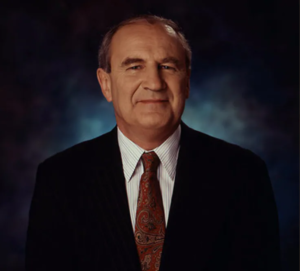
For a decade he chronicled Europe’s drift to disaster, covering the breakdown of the League of Nations, the Spanish Civil War and the Nazi takeover of Austria and Czechoslovakia. Along the way he interviewed Franklin Delano Roosevelt, Herman Goering, Neville Chamberlain, Charles de Gaulle, Mahatma Gandhi and dozens of others who shaped the history of the last century.
Canadian Wartime Aircraft Production
Harvard Mk II, IIA, IIB, IV
- Single-engine advanced trainer designed by North American Aviation Inc
- Designed for the U.S. Military and known as the AT-6 “Texan”
- Adapted by the BCATP – Named by RAF as “Harvard” (after the university)
- Built by Noorduyn Aviation Ltd. in Montreal in three Marks
- Built postwar by CCF in Thunder Bay and designated Mark IV / T-6J
- Mk IV gained an improved cockpit canopy and increased fuel capacity
- Most built of all Canadian aircraft (Noorduyn – 2800 / CCF – 555
Fairchild Cornell Trainer
Fairchild Primary Trainer M-62 “Cornell”
- Designed by the Fairchild Aircraft Division of Fairchild Engine and Airplane Corp of Hagerstown, Maryland, USA in 1938. The Model 62 was developed to fill a need for a rugged and dependable monoplane (Biplanes were still widely used) military primary trainer. A submission to US Army Air Corps of the Model 62 resulted in an order for 270 planes designated PT-19. The “Cornell” Series included the PT-19, PT-23 and PT-26 variations, was the most widely used Allied monoplane trainer both prewar and during WWII. The Cornell was built in Canada by Fleet Aircraft of Canada Ltd. and three other aircraft manufacturers in the USA, as well as Fairchild.
- The open cockpit Models 62C and the PT-23 used the Continental R-670-4 radial engine of 220 Hp. The RCAF ordered the fully canopied variation of the PT-26, designated as PT-26 A/B which used the Fairchild Ranger L-440-3/7 Six-Cylinder Inverted engine of 200 Hp.
- A composite construction method was employed with the fuselage being constructed with a fabric-covered welded steel-tube truss fuselage with wood fairings. The wings were built in three sections with two wood box beam spars, covered by plywood* as were the tail surfaces. Control surfaces were fabric-covered over a metal frame. Flaps were added to the trainer with the PT-26A having wooden flaps and the PT-26B having metal flaps. * In late 1943 a series of wing structure failures required the centre main spar to be reinforced to correct the problem.
- Fleet Aircraft built two versions of the Cornell, the PT-26A Cornell II for the RAF and the PT-26 Cornell III for the RCAF. When Cornell production was terminated in June of 1944, 1,642 aircraft had been produced.
Lancaster Bomber Production in Canada WWII
A busy Victory workplace showed women performing various tasks, whether on the production line or in the office. The Victory employment office was on University Avenue, where recruits were interviewed, finger printed and given medical training. Most recruits didn’t have any aircraft experience, so a training school had to be set up near the plant. 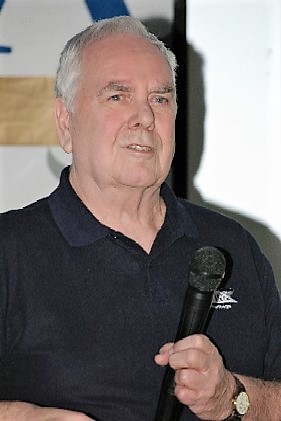 Dormitory units were also built for some employees. Women proved to be as capable as men at riveting, welding, assembly and performing other skills as required. In late 1944, a fire broke out at the training school. That wasn’t the only setback — a train that carried workers to the plant every day crashed and the employees were photographed as they walked to work. Various photos showed work on the fuselage sections, cockpit sections, engine mounts, the jigs, delivery and installation of gun turrets, undercarriage supports, the engine shop, the presses, and more. [ More info … ]
Dormitory units were also built for some employees. Women proved to be as capable as men at riveting, welding, assembly and performing other skills as required. In late 1944, a fire broke out at the training school. That wasn’t the only setback — a train that carried workers to the plant every day crashed and the employees were photographed as they walked to work. Various photos showed work on the fuselage sections, cockpit sections, engine mounts, the jigs, delivery and installation of gun turrets, undercarriage supports, the engine shop, the presses, and more. [ More info … ]
Bomber Command
Night Madness – PTSD – Love
The average age of World War II veterans is now 89. About 1.1 million Canadians served, including 731,000 in the army, 249,000 in the air force, and 106,000 in the navy. The numbers have dwindled to around 140,000 and are dropping quickly. Rick interviewed three of the six crew members who served with his father, though they all died before the book appeared. About 45,000 Canadians were killed in action, and about 53,000 wounded, in World War II.
More than 56 million people lost their lives in the war, including 35 million civilians. Twenty per cent of all dwellings in Germany were either completely destroyed or heavily damaged, displacing more than seven million Germans. RCAF losses in the war totalled 17,000 aircrew killed, including 3,000 who died in training.
More than 125,000 aircrew served in Bomber Command, of whom 55,000 or 44 per cent were killed and another 20 per cent were wounded. In Ron Pyves’ squadron, only about 30 or 40 of the first 200 aircrew survived either death or injury. Losses were especially high at the beginning when bombers flew without escort. The probability of surviving a tour of 30 operations was less than 20 per cent. However, the bombing campaign remained highly dangerous for the duration. Rick estimated that his father’s probability of survival throughout the war was only 48 per cent. [ More info … ]
— Footnote —
In the early to the mid-point of WWII, allied forces of the RAF Bomber Command and USAAF conducted bombing raids on nazi-occupied Europe on a continuous basis. The cost was very heavy in losses of men and machines, this being the case in spite of the Halifax, Lancaster and B-17 Fortress bombers being well-armed with both turret and fixed waist machine guns. Escort aircraft available, such as the Spitfire, were very short-ranged as shown on the following map.
During 1943, longer ranged escort fighters, equipped with drop tanks, such as the P-47 Thunderbolt, P-38 Lightning and the best of all, the P-51 Mustang became available, thankfully permitting a significant drop in the lose rate for allied bombers. See the map for the actual range figures for each fighter. For a greater understanding of the effects of those long flights on the crews, over hostile territory in all types of weather, we recommend getting and reading a copy of “Night Madness.” Also, an excellent movie made in the USA in 1949 on the subject is “12 O’Clock High”, with Gregory Peck, as the lead actor playing Col. Savage of the USAAF based in England. This movie is available on DVD and is shown on TV Channels TCM and TVO periodically. It was a favourite of the late TVO Host, Elwy Yost, who appeared on “Saturday Night at the Movies.”
Meet the 97-year-old Second World War veteran who’s helping a new video game take off
Bob Middleton, who flew on Lancaster bombers, helped with a new project from MicroProse Canada
Ghosts of Targets Past
There were 370 bombers zeroing in on the target in one continuous stream, our R•Roger flying about a third of the way back from the lead plane. Just ten minutes to go now Pockmark bursts of spent and exploding anti-aircraft shells were clearly visible They looked horrific hanging there in the gloriously blue sky We had never seen such organized bedlam before. ‘You watching the flak , Skip? The question from the Mid-upper Gunner found a gap in the radio intercom. ‘I’m watching it, Blondie,’ I replied, missing out the last part of the sentence which would have added something like, ‘and it s doing the same to me as it’s doing to you It’s got me shi**ing blue lights.’ Other messages passed over the intercom network inside theplane most of them relevant to the work at hand. The Rear Gunner warned that one of our planes following behind was beginning to drift forward and above us. Bomb Aimer and Navigator exchanged notes and instructions, readying for the release of our bombs and incendiaries
[ More info … ]
Luck is 33 Eggs
After the Dunkirk evacuation, June 5, 1940, there were no Allied soldiers in occupied Europe for four years until after D-Day on June 6, l944, when the Allies returned to France. The stories in books and the movies of soldiers fighting in Europe only take place during the last 336 days of the war in Europe. The war in Europe since the September 3, 1939, declaration of war by Britain and France to the end was 2,312 days long. 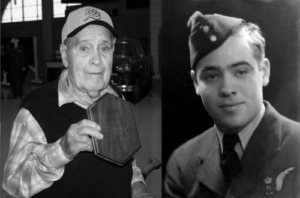 Bomber Command fought in the skies for all those 2,312 days. After Dunkirk, the airmen of Bomber Command and later, with the USAAF Eighth Air Force were the only soldiers taking the fight back to Germany in the skies. This is considered the longest continuously running battle in history, day, and night for almost 6 years. The years of bombing by Bomber Command and the USAAF eventually wore down and softened up the Nazi war machine so that the Allied armies could successfully get a foothold in France and finish the job on the land. Out of the 125,000 British Commonwealth, Bomber Command volunteers 55,573 never came home. Of the 50,000 Canadians in Bomber Command 10,250 were killed.
Bomber Command fought in the skies for all those 2,312 days. After Dunkirk, the airmen of Bomber Command and later, with the USAAF Eighth Air Force were the only soldiers taking the fight back to Germany in the skies. This is considered the longest continuously running battle in history, day, and night for almost 6 years. The years of bombing by Bomber Command and the USAAF eventually wore down and softened up the Nazi war machine so that the Allied armies could successfully get a foothold in France and finish the job on the land. Out of the 125,000 British Commonwealth, Bomber Command volunteers 55,573 never came home. Of the 50,000 Canadians in Bomber Command 10,250 were killed.
[ More info … ]
Dam Busters
They were exhausted by the six-hour flight from Britain to the Ruhr Valley and back. Upon landing safely in Scampton, they had the most precious meal in all of England: bacon and eggs. They were then awakened for official RAF ‘special occasion’ group pictures of the aircrews — the British, Australians, New Zealanders, Canadians, and an American, Joe McCarthy (no relation to the senator). The faces of the crewmen were telling. They were young. There probably wasn’t one older than 26 among them. The sun was shining. There may have been satisfaction in a job well done. But a sense of loss was evident. A lot more crewmen should have been in the photo. Fourteen Canadians did not return from the operation, involving 30 Canadians in all. The photograph was emblematic of a time when the war wasn’t going well for the Allies. [ More info … ]
Bomber Command Memorial Green Park, London UK
Footnote – RAF Bomber Command
The RAF Bomber Command consisted of the RAF, RCAF and RAAF Air Forces, plus thousands of Airmen from many allied nations.
RCAF 400 Squadron
In 1943, 400 Squadron suffered its first ‘friendly fire’ incident when a pilot was shot down by RAF aircraft. The Mustangs resembled some enemy aircraft. To avoid more tragedy, bands were painted around the wings and tail to improve identification by friendly aircraft. Flying over France meant more tragedies would occur. Three pilots survived after being shot down over France. Two became prisoners of war, but one avoided capture through France, Spain and then Gibraltar. He was finally reunited with his squadron almost one year after being shot down.
The squadron was dubbed “the train-busters” because of its ability in destroying enemy ground targets. Some enemy aircraft were downed as well and in November 1943 another pilot was awarded a DFC. The Mustang was ideally suited to low-level tactical recce and ground attack. However, there was growing emphasis on high-altitude, long range strategic recce. By the end of 1943, the squadron re-equipped with the Spitfire and the Mosquito. Both were unarmed and relied on altitude, speed and camouflage to evade interception. . [ More info … ]
The wide-ranging operations of the RAF 2TAF ranged from the routine, to some that were rather hair-raising, to others that were tragic. Many young men had to endure hours of routine punctuated by sudden and unforgettable terror. Friends could be lost in a split second of flash and flame. Others became prisoners of war. More were grounded due to nervous exhaustion, which the RAF rataher brutally and also controversially termed “lack of moral fibre”. The final Mitchell operation of the RCAF crew told a story in itself. Their B-25, VO-G, had been battered by intense flak on 25 November, 1944, all the way back after attacking railway marshalling yards in Germany. Its windscreen had been shattered, hydraulic systems shot out, and the crew came to a stop only as the wheels of the B-25 sank into a freshly filled bomb crater near the end of the runway. The ground crew counted 94 flak holes.
The contents of this article were originally presented to the CAHS Toronto Chapter at a meeting on December 1, 2018. All material has been edited and adapted for this website.
The B-25 History Project is dedicated to honor and preserve the history of the B-25 and the men and women who built, flew, and maintain them; past, present, and future. In addition to thousands of digital documents, the project maintains both 2D and 3D physical archives containing hundreds of B-25 related artifacts.
Women’s Division, Royal Canadian Air Force
First In, Last Out, Glad Bryce – The Royal Canadian Air Force was the first service to allow women into its ranks, and women remained in the war effort longer than their counterparts in the army and navy. Glad recounted that when she meets with WDs, they often say, “we were first in, last out,” which became the inspiration for the book’s title. First In Last Out received the ‘royal seal of approval.’ Queen Elizabeth was given a copy of the book during a Canadian visit in 2010. “She put her nose right into it and almost missed her next appointment!” The Queen placed the book in her personal library, and later sent Glad a personal letter complimenting her work. The cover features Queen Elizabeth (the Queen Mother) inspecting WDs during the war. For many of the women Glad interviewed, their main reason for joining the war effort was to “fight Hitler.” “It was amazing that these 19 year old women had this in their psyche.” Their logo featured the motto “we serve that men may fly.” The air force was very accommodating to women, as their ranks of men were quickly “going off and being killed,” and they needed people to work on the planes. [ Read the whole story … ]
ATA Operations in WWII
WWII Military Aviation Gallery
German Fighters
The legendary Messerschmitt Me 109 was the definitive German fighter plane that comes to mind for most of us when thinking of WWII.
This rival to the Spitfire and Hurricane in the Battle of Britain served in almost every theatre of war in WWII. First flown in September 1935, the Messerschmitt Me 109 was built in larger numbers than any other fighter in history. Although records are incomplete it is estimated that approximately 35,000 were built with a few thousand extra rebuilt from wrecks. It was designed by Willy Messerschmitt and was Germany’s first successful modern, low wing monoplane fighter and originally known as the Bf 109 after the Bavarian Flying Works (Bayerische Flugzeugwerke) factory that built it. The Bf 109B-1 model was sent to Spain to fight in the Spanish Civil War in 1937 and was flown by German Legion Condor Volunteers in support of Dictator Franco. The Bf 109 quickly gained air superiority over the Republican Forces (Communist) who were flying Russian- built and supplied I-15 biplanes and I-16 monoplanes. All of these early Bf 109s were powered by the Junkers Jumo 12-cylinder liquid-cooled engine of approximately 700 hp. [ More info … ]
Battle of the Atlantic
Submarine captains would dare not surface their vessels in the presence of Allied Aircraft which could alert nearby naval vessels or attack the U-boat with air-launched weapons. Maritime air power is not specifically naval, nor does it focus on the traditional air force history of fighters and bombers. As a result, Richard said, the subject has often been overlooked or even ignored by naval historians and aviation enthusiasts. The Mid-Atlantic Air Gap, also known as “the Black Pit,” consisted of a giant hole in the air cover over the main trade routes between Britain and North America. It stretched 300 miles across from east to west, and 600 miles north to south from Greenland to the Azores Islands. In 1942 and 1943, Germany focused most of its U-boat fleet against Allied convoys in this area. Free from aerial attack, U-boats were easily able to move on the surface at night and target poorly protected convoys.
Battle in the Gulf of St. Lawrence
The battle in the Gulf of St. Lawrence from 1942 to 1944 is described as “Canada’s unknown war.” It is only in the past 10 years that the story has received extensive coverage. Many Canadians don’t realize that the war came to Canada. Twenty-three merchant ships, and four warships, were lost in the Gulf of St. Lawrence to U-boats. More than 360 lives were lost. Thirteen German submarines were involved. Many Canadians are unaware that U-boats advanced to within 300 kilometers of Quebec City. Peter maintained it can be said that when considering all of the casualties, Canada lost the war in the Gulf despite the ultimate victory in the Battle of the Atlantic. [ More info … ]
German Military Planning Pre-WWII – Battle of the Atlantic
The following is an edited excerpt from the book, “Shorty, An Aviation Pioneer”, Author James Glassco Henderson. Courtesy – Trafford Publishing
At the end of December, 1936, famous bush pilot, Babe Woollett, arrived in Rimouski, Quebec in a Fairchild 82 with a load of passengers, their equipment and a fantastic story. He had been engaged for about a month surveying Anticosti Island on a special contract arranged by a Dutch company which had explained that they were interested in the forestry industry and were looking into the possibility of buying the whole island. When the company experts arrived, it became obvious that they were not Dutch and not one of them had any noticeable skills in the pulpwood business. Two were officers in the Luftwaffe, the German Air Force, one was in the Wehrmacht, the German Army and the fourth was a German Naval Captain. After completing the survey, they had thrown a huge Christmas party, complete with a tree covered in German decorations, at Port Menier,
On their arrival back at Rimouski in bad weather they hastily loaded their newly marked maps and aerial photos onto the train and departed, leaving Woollett and his mechanic to wait out the weather in the St. Laurent Hotel. Woollett was able to fly to Montreal the following day where he reported to the authorities his clients, unusual activities, but until their real significance did not become fully apparent until several years later when, during World War II, Nazi submarines frequently operated quite comfortably in the waters surrounding Anticosti Island.
David Hornell’s Victoria Cross
Hornell’s crew abandoned the Canso and launched two dinghies. When one of the dinghies exploded like a pricked balloon, (Apparently from over-inflation) the eight crew members were left with just one dinghy —- designed to hold four men —-in the cold North Atlantic with 30– foot swells. After eight hours had passed, the crew managed to signal a Catalina, a Norwegian aircraft from 333 Squadron, as it flew over. F/O Graham Campbell had three flares. Nothing happened when he tried to fire the first two but fortunately the third one went off and the Catalina crew saw it. In the meantime, the RAF had become aware of a Canso down, and sent out Air Sea Rescue Launch HSL 2507, equipped with long range fuel tanks, from the Shetland islands in 12 foot waves and deteriorating weather. After one engine failed the crew continued on for 17 hours and completed the rescue mission of the survivors.
Battle of the Atlantic – Ted Barris
In the 20th century’s greatest war, one battlefield held the key to victory or defeat – the North Atlantic. It took 2,074 days and nights to determine its outcome, but the Battle of the Atlantic proved the turning point of the Second World War.
For five and a half years, German surface warships and submarines attempted to destroy Allied transatlantic convoys, mostly escorted by Royal Canadian Navy destroyers and corvettes, as well as aircraft of the Royal Canadian Air Force. Throwing deadly U-boat ‘wolf packs’ in the paths of Merchant Navy convoys, the German Kriegsmarine nearly strangled this vital life-line to a beleaguered Great Britain.
In 1939, Canada’s navy went to war with exactly 13 warships and about 3,500 sailors. During the desperate Atlantic crossings, the RCN grew to 400 fighting ships and over 100,000 men and women in uniform. By V-E Day in 1945, it had become the 4th largest navy in the world. The Battle of the Atlantic proved to be Canada’s longest continuous military engagement of the war. The story of Canada’s naval awakening in the bloody battle to get convoys to Britain, is a Canadian wartime saga for the ages.
The Desert War
The first Libyan Air Campaign was the earliest British victory in the war. It destroyed the Regia Aeronautica and when British arms arrived in Tripolitania there was nothing to prevent the Italians from being driven out of Africa. At this opportune moment the British Government decided to send British Forces from Egypt to Greece, which led to a military disaster. The consequences were that the Germans moved into Africa, and there was a danger that the whole Middle East might be lost. The first Libyan Air Campaign was an example of how an inferior Air Force can sustain an offensive and finally overcome its adversary. The author’s have produced in this book an excellent historic document. It will be a valuable tool to research workers and a memorial to the devoted and valiant air crews who conducted the African Air Campaign. [ Read the whole story … ]
RCAF 417 Squadron
History of RCAF 417 Squadron / WWII
- RCAF 417 Squadron was formed in England on 27 November 1941 at RAF Charmy Down and was known as the “City of Windsor” squadron.
- 417 was first equipped with the Hurricane and later the Spitfire.
- The first deployment was to Egypt for defence of Suez and the Nile Delta. Later transferring to Tunisia for the allied advance through the Western Desert.
- Operating under the direction of the British Eighth Army the squadron provided ground forces with air defence and close support.
- After the defeat of the axis forces in North Africa, the squadron moved to Malta under the direction of the RAF No. 211 Group / No. 244 Wing for the invasion of Sicily under Operation “Husky” in 1943.
- The allies launched the invasion of Italy on September 3, 1943 and it quickly turned into a difficult and exhausting campaign. The squadron moved to different landing fields very frequently.
After the almost two years to secure victory, the Squadron was disbanded at Treviso, Italy 30 June 1945. (See map for details).
The squadron was reactivated postwar and was assigned various duties and responsibilities. Currently (as of 2023) the squadron is a “Combat Support Squadron” based at CFB Cold Lake, Alberta and provides helicopter support to the base operations as well providing search and rescue capabilities with the CH-146 Griffon helicopter.
The “Badge” – The palm tree suggests the desert; the sword, air support for the army; and the “fasces” (Bundled rods with an axe handled head), the fighting in Italy.
For operational details go to rcafassociation.ca/heritage
Pete Farrow was born in Swansea (Toronto) Ontario, but his family moved to Humber Bay when he was about 18 months old. At this time, his father went into partnership with his two brothers – in – law in the Humber Bay Coal and Supply Co. on the Queensway. Pete attended the Humber Bay Public School and Mimico High School. In late 1939, he joined the Royal Canadian Air Force and trained as a Navigator. While stationed in Egypt, during the Desert War, he was forced to bail out of his Wellington Bomber 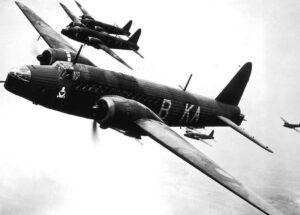 and was captured on August 25, 1940 by the German Africa Corps and he spent approximately three years in the German and Italian prisoner of war camps. Pete was discharged in September 1945 and joined the Dominion (Canada) Income Tax Department. While working there, Pete completed studies started in prison camp and became a Certified Public Accountant.
and was captured on August 25, 1940 by the German Africa Corps and he spent approximately three years in the German and Italian prisoner of war camps. Pete was discharged in September 1945 and joined the Dominion (Canada) Income Tax Department. While working there, Pete completed studies started in prison camp and became a Certified Public Accountant.
In July 1950, he went into public practice on his own, working for fifteen years as a Chartered Accountant and Licensed Municipal Auditor. In December 1956, Pete was elected Councillor for Etobicoke’s Ward 3 (Title later changed to Alderman) where he continued to serve until 1965. At this time, he gave up his accounting practice in order to serve as Controller. In December of that year, he was elected to the Board of Control and served in that capacity for six years. During that time, he also served 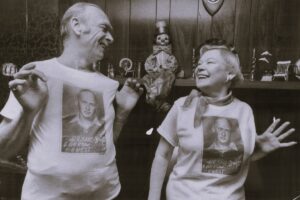 on Metro Toronto Council and for three years and nine months, served as a Commissioner on the Toronto Transit Commission. As a member of the T.T.C. he was successful in having the Bloor -Danforth subway line extended west to Kipling Ave. After suffering a stroke in October 1984, he was forced to retire from public office. He had served for twenty-four years, first on Etobicoke Council as Councillor / Alderman and for eighteen years and then a further six years as a member of Metro Toronto Council and Controller. Pete died on January 28, 1991 and the authors are pleased to dedicate this book (“Humber Bay” – The Way We Were 1900 – 1950). Authors – Harry and Blanche Hall (Gwilliam). Edited by Robert (Bob) Winson CAHS #4226
on Metro Toronto Council and for three years and nine months, served as a Commissioner on the Toronto Transit Commission. As a member of the T.T.C. he was successful in having the Bloor -Danforth subway line extended west to Kipling Ave. After suffering a stroke in October 1984, he was forced to retire from public office. He had served for twenty-four years, first on Etobicoke Council as Councillor / Alderman and for eighteen years and then a further six years as a member of Metro Toronto Council and Controller. Pete died on January 28, 1991 and the authors are pleased to dedicate this book (“Humber Bay” – The Way We Were 1900 – 1950). Authors – Harry and Blanche Hall (Gwilliam). Edited by Robert (Bob) Winson CAHS #4226
A Canadian “Ace” of The Desert War – W.J. (Bill) Wilson In the early 1940s, a young Canadian fighter pilot, named William J. Wilson (Bill), looked forward to his WWII overseas posting to the North African Campaign.
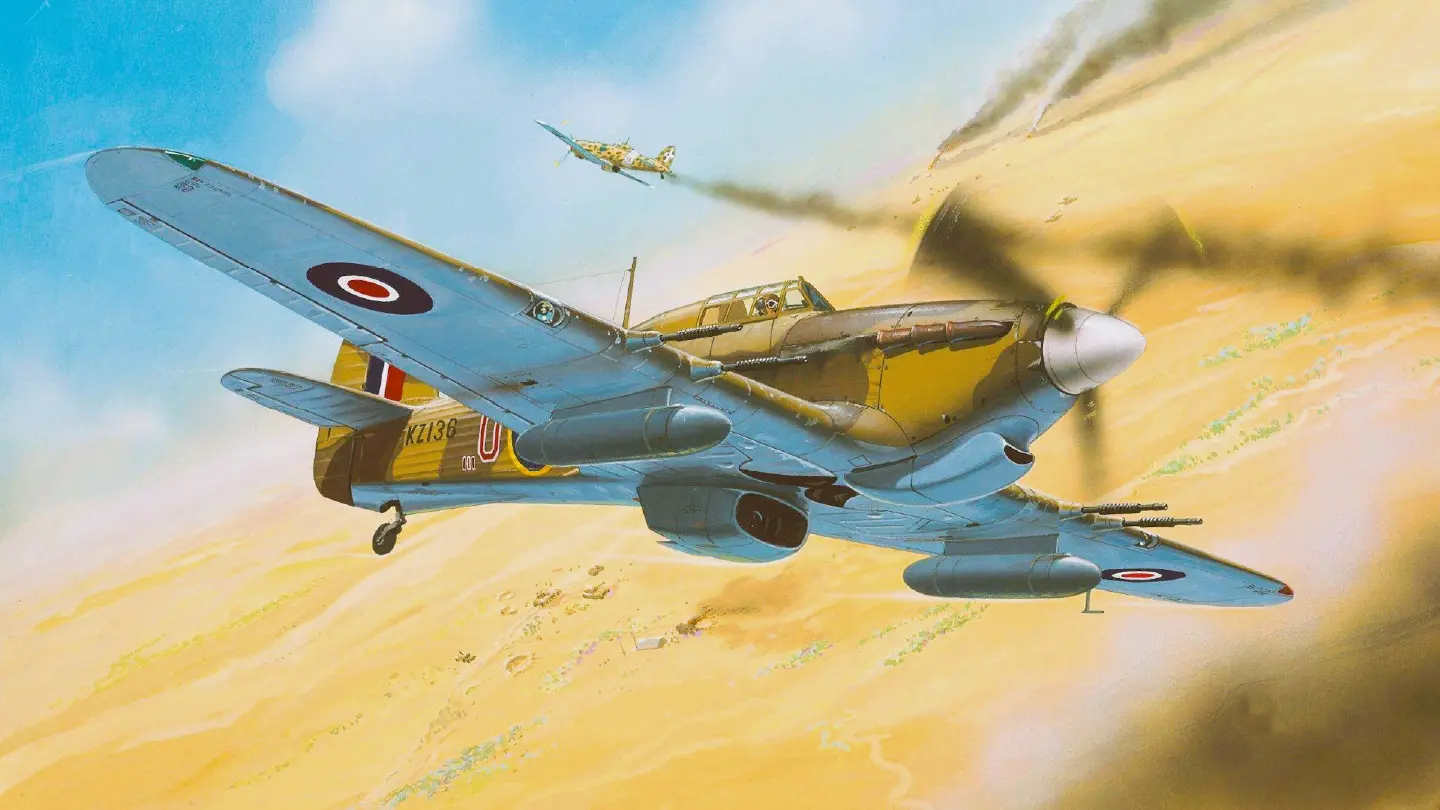 The Hawker Hurricane was the first modern fighter aircraft available to the Commonwealth forces in the desert. Prior to the Hurricane coming the best fighter aircraft the RAF Desert Force had was the Gloster Gladiator Biplane. The Hurricane was welcomed, but it was still no match for the Messerschmitt Me109F/G.
The Hawker Hurricane was the first modern fighter aircraft available to the Commonwealth forces in the desert. Prior to the Hurricane coming the best fighter aircraft the RAF Desert Force had was the Gloster Gladiator Biplane. The Hurricane was welcomed, but it was still no match for the Messerschmitt Me109F/G.The main mission of 80 Squadron was as a Hurricane Bomber Squadron attacking specific targets, usually the supply columns supporting German Armour Units. The Hurricanes strafed and bombed the columns to cause as much disruption as possible. The Squadron tactic was to attack from the direction of the sea for the element of surprise and depart the same way. The pilots were told to avoid enemy fighter
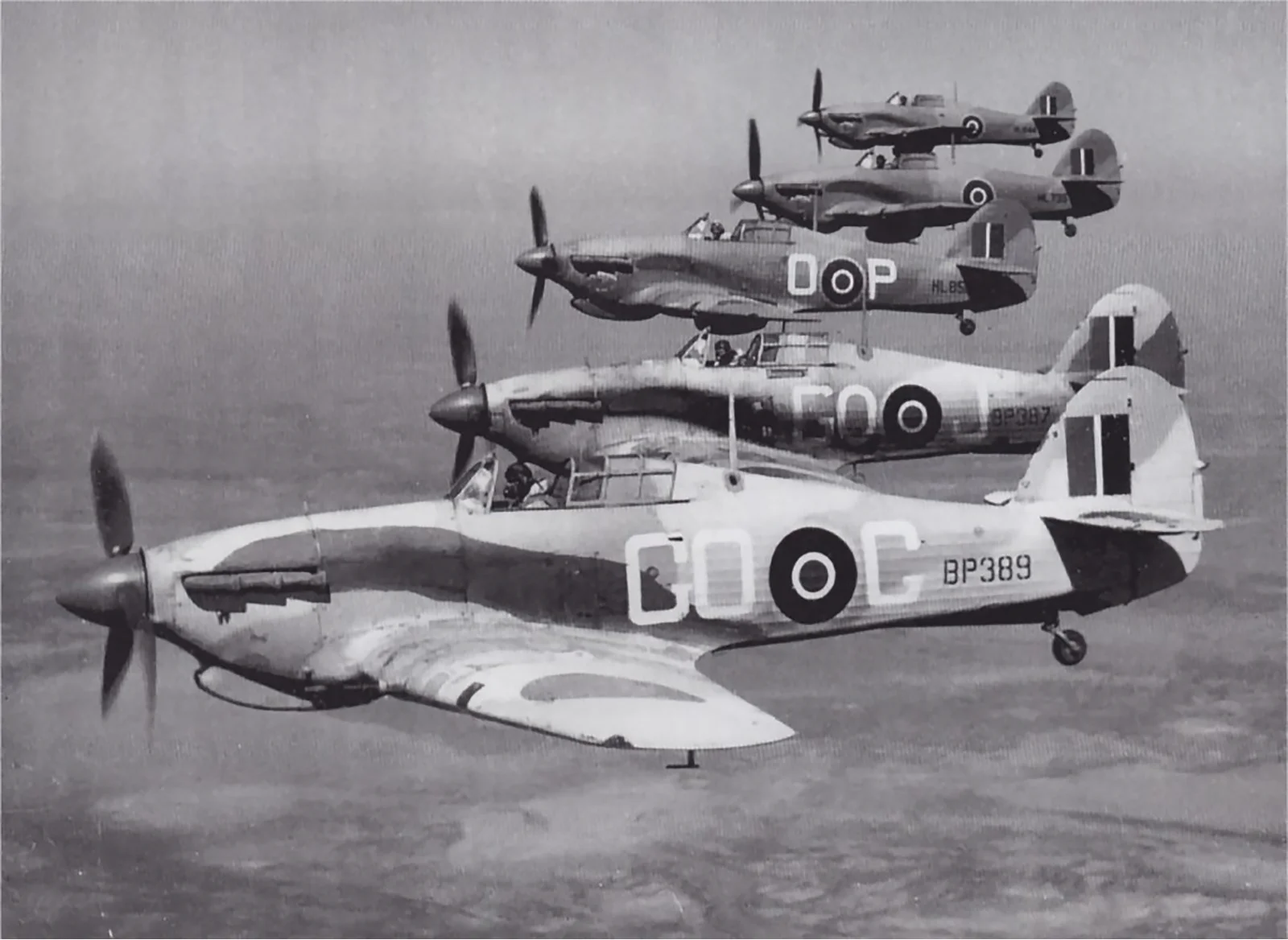 patrols as much as possible, since the Hurricane speed slowed considerably when “Bombed Up”. Additional advice to the pilots from the squadron was not to use up all of their ammunition strafing since it might be needed if attacked by Axis fighters. At the end of his service in the Desert War, Bill had destroyed five Axis aircraft and one more in a different theatre.
patrols as much as possible, since the Hurricane speed slowed considerably when “Bombed Up”. Additional advice to the pilots from the squadron was not to use up all of their ammunition strafing since it might be needed if attacked by Axis fighters. At the end of his service in the Desert War, Bill had destroyed five Axis aircraft and one more in a different theatre.Following WWII, Bill resumed aviation activities as a flying instructor in the Toronto area. Bill is probably best remembered as the Flight Manager for Sanderson – Acfield Ltd. based at Pearson Airport. The company was located in the general aviation zone in the north area of the airport off Derry Road and it provided services for Charter, Aircraft Sales and A/C rentals. A well respected neighbour was Field Aviation Ltd. a major modifier, with aircraft sales facilities. Bill suffered some continuing health problems that were a result of his time spent in the desert environment. Bill passed away quietly while still employed with Sanderson – Acfield. As with many other veterans, Bill survived to live in the postwar period, but poor health ended his life prematurely. Compiled by Robert (Bob) Winson / CAHS #4226
In modern history Malta became a British Protectorate in 1813 and this was later confirmed by the Treaty of Paris in 1814. Malta then developed as an important naval base for Britain and as headquarters for the Mediterranean fleet. Malta’s geographic position in the “Straits of Sicily” gave Britain control of almost all east-west sea traffic from Gibraltar to the Suez Canal, creating a major military advantage. This British asset was a detriment to Italy’s ambitious nationalistic plan to expand its southern national boundary to North Africa by expansion of its existing colonies in Libya. This massive plan included the annexation of Egyptian lands all the way to Suez. As an obstacle to Italy’s plans, Malta, therefore became a prime target. Italy then asked its Axis partner, Germany, to help in the removal of Malta as a threat to the completion of Italy’s ill advised bold annexation attack on other nations. Germany saw the advantage of the plan as a partner to Italy, since German participation would divert scarce British war resources from the European Theatre. After many centuries of domination and being ruled by others, Malta finally became an independent republic in 1974. [ Read the whole story … ]
The History of 436 Transport Squadron
Around February of 1945, the reality of delivering supplies to support a fighting force on the move became problematic. Meat for the soldiers posed a significant issue. The squadron used local handlers to offload meat, but they refused to handle it for religious reasons. The squadron offered to pay any groundcrew, who desired to fly as aircrew, 75 cents a day as their flying pay (which they never received) to load and offload material. The job was supposed to last two weeks. Lo and behold, that job still exists in 2010. “That two weeks has been going on forever,” Tim said. “That was the start of the loadmaster trade.” What a job it was. Photos showed loadmasters, also known as kickers, throwing cargo out the door in-flight without any safety harnesses. Tim cited an example of Canadian ingenuity in solving the problem of ensuring that material was dropped into the right location, considering that there wasn’t any overland transportation to move it from the landing spot to where it was needed. Strategists decided to drop mules from the Dakota to carry the cargo to the right place. The mules, naturally, were frantic about being dropped in-flight and were petrified when they hit the ground. Many of them sustained broken legs and other injuries and had to be shot. The answer proved to be none other than — wait for it — the drunken mule. The mules were “loaded,” so to speak, with about half a bottle of rye whisky each to make them much more amenable to the journey to the ground.[ Read the whole story … ]
Double Threat - Ellin Bessner
In 1945, the Second World War came to an end. For the Jews of Canada, this war was what the Prime Minister of the day, Mackenzie King, called a “Double Threat”: he said Hitler was not only dangerous to freedom and democracy, but was a threat to the very survival of the Jewish people as a race. In spite of this backdrop, or maybe because of it, more nearly 17,000 Jewish Canadians enlisted in every branch of the service, and in the merchant marine. They fought and died in every major battle including Hong Kong, Dieppe, the Battle of Britain, the Battle of the Atlantic, North Africa, Ortona, D-Day, Falaise, the Scheldt, and throughout Northwest Europe, and in the Pacific.
Over 190 received military honours for bravery. Nearly 450 did not come home. You can find Canadian Jewish military graves from WWll, in all corners of the world, including the large cemeteries of Normandy, as well as in Germany, England, and Holland…plus in far-flung places such as Iceland, Ghana, Libya, and Crete. [More info … ]
An Ordinary Hero
The movie industry has portrayed WWII fighter pilots as “tough as nails”, totally fearless men who were hungering for the next kill. On the big screen, the scene is one of unbroken action, the sound of machine gun fire and the sight of exploding enemy aircraft. Hollywood likes heroes, but is Hollywood’s depiction true? What was myth? What was reality? What was it like to face death? How did men survive years of war? How did it feel to kill another man, who had a mother and a father, brothers and sisters, perhaps a wife and children? How did a military serviceman adjust to civilian life after the war? “Surviving a war day after day made heroic demands upon an individual,” David quoted from the preface of his book. “Brief moments of frantic action highlighted a steady diet of tension, poor living conditions, and routine patrols. The constant psychic shocks, the crushing physical and psychological burdens, cannot be described in terms which relate to normal peacetime experience.” [More info …]
WWII Photography & Art
His job was to document history in action: civilians and children on the roadside, aerial views of bombed towns and sometimes still burning German enemy targets. In addition to taking pictures on the ground, he also developed images from Spitfire reconnaissance aircraft, used to monitor the progress of the bombing campaign and the movementof German troops and arms. Jack would then process the recon films out of a mobile darkroom set up in a truck behind the lines, then passprints on to his commanding officers. Once a British photo unit under Montgomery’s command came by with film they needed processed and printed. Jack did so, and as with his own pictures kept a second set of contacts for himself. [Read More …]
Prisoners of War - POWs
The Great Escape: The Canadian Story
The entrance to “Harry” in Hut 104 began with a trap door. Ley Kenyon, a British commercial artist in the RAF, was the documentarian for the escape. His sketches were rolled into a pencil-sized cylinder and stuck inside the pendulum of a cuckoo clock, hidden in Tony Pengelly’s barracks. That was essentially the diary of the escape. One diagram showed how the stove below the chimney was removed. The stove sat on a trapdoor. At the base of the stove was a series of tiles, for protection against the stove burning. The POWs busted through the tiles into the wood to go through the concrete down to the ground. Three RAF officers, Polish, who were tilemen, immediately replaced the tiles with something that looked exactly the same so it looked as if nothing had happened. The tunnellers worked mostly naked, or nearly naked. If they went down in their street clothes, the yellow sand would stain their elbows and knees and alert the Germans. If they were naked, it was easier to hide though their elbows and knees might be stained yellow. In the winter, connecting tubes ran from the stove to the wall, so the stove was still generating smoke. The tunnel was 360 feet long and about 30 feet deep. All of the walls of sand had to be shored with wood. Every wooden bunk bed gave up some of its cross members. So the tunnel became the exact length of the bunk bed boards and was about two feet square. Tunnel sentries, called “stooges,” passed signals to one another. George Sweanor, a Port Hope native, was the duty pilot. He hung his laundry just inside the main gate and signalled according to how he hung his laundry. Other stooges closed or opened a drape, or lit a pipe. The final stooge would turn to Pat Langford, of Edmonton, or Hank Sprague, from Nelson, B.C., who protected the trapdoor to “Harry.” They could open or close the trap in less than 60 seconds. The wood in the walls and ladder was key to the strength of the tunnel. If it was rotten, it could break and the tunnel sand would pour in like water. There was a risk of suffocation in the tunnel. The sand was precarious and at times it would pile up on Floody and the other diggers, who could barely be pulled to safety by their tunnel mate to avoid suffocation. [ More info … ]
Survival – My Fathers War as an Air Force Gunner and P.O.W.
Al was the mid upper gunner, one of seven crew members flying in a four-engine Mark II Halifax Bomber. On his 15th mission on May 12/13, 1943, Al’s plane was shot down over Duisburg, Germany. They were up at around 20,00 feet. “We dropped our bombs over Duisburg, but we had a hang-up – two clusters of incendiaries did not drop,” remembered Al. They were forced to repeat the run, at which point they were hit on their starboard wing. The plane immediately lost two engines, and the wing caught fire. The pilot and engineer quickly decided that the aircraft was doomed, so the order to bail out was given. Al put on his parachute and opened the hatch right behind the wing. “Everything was just totally black,” recalled Al. “We couldn’t see anything but darkness. I thought I was having a nightmare.” He plugged back into the intercom asked the pilot how high they were. He shouted back, “12,000 feet, WALLY. GET OUT, GET OUT.” Al then unplugged, and gave a little wiggle to get closer to the edge. The slipstream took care of the rest, sucking him out of the plane. Five of the seven crew members bailed out successfully. The plane’s pilot and wireless operator did not leave the plane and did not survive. [ More info … ]
Prisoner of War Interviews
Ken had survived for a second time, but extreme danger still existed. As Ted noted, “You can imagine the experience of parachuting to the ground into a city you just bombed; if the citizens captured you, revenge on their part was often brutal, and life-ending.” Fortunately, the first people to find Ken were German military. To them, he was more useful than German citizens. As a PoW, and with skilled interrogation, he might give up military information of great value. Being captured by the German military, rather than citizens, was Ken’s third escape from death. Ken was placed in a jail cell. He always remembered that both the mattress and the pillow on his cot were solid blocks of wood. His first meal was cabbage and potatoes boiled together. Here he was, at 23, having already escaped death three times, facing a most uncertain future. The food was very minimal. Ken weighed 160 pounds when he was captured. When he was freed, a year later, he weighed 120 pounds. Two meals a day were provided: breakfast was some kind of porridge or gruel; supper was something cooked into soup. Red Cross parcels were a blessing in many ways. However, Ken told Ted the food situation could have been much worse. Ken’s prison camp in Barth had a section that contained only Europeans — mostly Polish and Jewish people. They were kept 32 to a room and given very minimal amounts of food. If one of the 32 died, the death would be kept secret from their captors. That way, the remaining 31 would have an extra 1/32nd share of food. It was only when the stench of the decaying corpse became overwhelming that the opportunity for extra food would be given up. [ More info … ]
The Battle of Britain
The Battle of Britain, July to October 1940, took place 75 years ago last summer and fall. While the struggle is often described as “a damn close run thing!,” that phrase originated with British general Arthur Wellesley, the 1st Duke of Wellington, at the Battle of Waterloo in June 1815. As Tim noted, the description is equally appropriate to the Battle of Britain. Tim played a broadcast by Winston Churchill when he rallied Britain after the fall of France: “Upon this battle depends the survival of Christian civilization. Upon it depends our own British life, and the long continuity of our institutions and our Empire. The whole fury and might of the enemy must very soon be turned on us. Hitler knows that he will have to break us in this island or lose the war. If we can stand up to him, all Europe may be freed and the life of the world may forward into broad, sunlit uplands. But if we fail, then the whole world, including the United States, including all that we have known and cared for, will sink into the abyss of a new dark age made more sinister, and perhaps more protracted, by the lights of perverted science. Let us therefore brace ourselves to our duties, and so bear ourselves, that if the British [ More info … ]
Little Norway
Hitler attacked Norway on April 9, 1940. Norway’s armed forces were poorly equipped, partly due to a pacifist attitude common across Europe after World War I. Norway lacked a separate air force. Instead, the army and navy each had an airborne division called an air service. Most of the aircraft were antiques by the standards of the day, such as 45 Fokker C.V biplanes flown by the Army Air Service. One fighter squadron had 10 Gloster Gladiator biplanes. A handful of these aircraft battled German aircraft in dogfights, but they were no match for the Luftwaffe. As a German flotilla approached Oslofjord, the fortress’s guns and torpedoes sank the brand-new German heavy cruiser Blucher. The sinking delayed the capture of Oslo, allowing the king, government members and protectors of the treasury to escape before all of the targeted Norwegian cities were in German hands. [ More info … ]
Exile Air - Andrea Baston
After Germany invaded Norway during World War II, the Royal Norwegian Air Force took refuge in Canada to rebuild. Young Norwegian exiles came to the “Little Norway” training camps in Toronto and Muskoka, keen to learn flight skills and return to battle the Germans overseas.
This is the true story of the Royal Norwegian Air Force training camps located in Canada during World War II. It’s a tale of the courageous young Norwegians who endured dangerous escapes from their homeland to come to “Little Norway” in Toronto and Muskoka, Ontario. There, they learned flight skills and returned overseas to battle Nazi fighter planes and enemy submarines— and excelled. In 1943, one of the Norwegian squadrons was named the top-scoring Allied fighter squadron in all of Britain’s Royal Air Force.
“Exile Air tells a true, inspiring story from Norway’s and Canada’s history, more significant than ever during Canada’s 150th anniversary year. This 240 page book ($28.95) is available at www.oldstonebooks.com, www.amazon.ca and selected bookstores.
The BCATP Story – “The Aerodrome of Democracy”
Established in December, 1939, the BCATP would become Canada’s largest expenditure in the Second World War. Canada spent $1.75 billion on the plan between 1939 and 1944. Canada, the U.K., Australia and New Zealand were the four major countries. Prime Minister Mackenzie King was shown symbolically pinning wings on the first graduate out of a course in Ottawa in honour of the creation of the plan on Dec. 17, 1939. Why Dec. 17? Lo and behold, Ted discovered that Dec. 17 was Mr. King’s birthday! King wrote in his diary that he had, on a “memorable birthday,” established one of the greatest plans the war had ever seen. He was right, but he took far more credit than he deserved. Posters went up, recruits arrived and training stations opened at 231 locations across the country. Canada operated as many as 11,000 aircraft and no fewer than 104,000 Canadians were employed from coast to coast. The Plan produced at least 131,553 trained aircrew over 5½ years. It was, Winston Churchill said, the most decisive factor in winning the war. U.S. President Franklin D. Roosevelt, a strong supporter of the BCATP, sent a congratulatory letter to King on its third anniversary. Seeking the best words, FDR turned to the Canadian embassy for help. Diplomat Lester B. Pearson famously coined a phrase lauding Canada as the ‘aerodrome of democracy” which FDR used in the letter. [ Read the whole story … ]
A Letter from a BCATP Graduate
I had not previously appreciated the magnitude of Canada’s contribution to WWII. I was certainly surprised to read about the extent of aircraft production in Canada. The only other aircraft I saw at Malton, as well as the Douglas and Lockheed airliners, was a single Hampden.
After completing elementary flying training at Malton, I was posted to No. 5 Service Flying Training School at Brantford, Ontario (Ansons and Harvards). I was awarded my Pilot Wings in June 1942 as part of Class 49 Number 12. There was a rather strange coincidence whilst I was at Malton. The RAF pilot trainees were invited to spend Christmas 1941 with Toronto families. I was collected by Mr. Henry Williamson Simpson of Balliol Street No. 12. I never established if we were distant relatives. Mr. Simpson had connections with the area where I had lived as a boy, and his brother was a member of the staff of a grocery store in a nearby town. Three members of the family were my guests at the Pilots Wings Presentation Ceremony at Brantford. I spent almost eighteen months in Canada and throughout that time I was treated as a member of their family. [ Read the letter … ]
The Legacy of the BCATP Airfields
During WWII there were 176 airfields that were constructed for or used by the BCATP. Of these, at least 78 are still active airports”. (Grant Bailey) As noted in the aerial photo of Picton Airport, it has retained the triangular runway layout that every airport built by BCATP featured. The runways themselves were uniformly 2500 feet long and 100 feet wide and constructed of concrete. 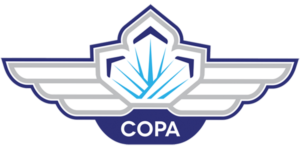 All of this airport construction activity created mini-economic booms locally and more benefits during the duration of the schools and occasionally long term postwar aviation activity. The plaques above shown the surprising loss of life during training under the BCATP Plan. In total 856 aircrew lost their lives in Canada, while training.
All of this airport construction activity created mini-economic booms locally and more benefits during the duration of the schools and occasionally long term postwar aviation activity. The plaques above shown the surprising loss of life during training under the BCATP Plan. In total 856 aircrew lost their lives in Canada, while training.
Air Cadets
By May 1942, the movement had grown to more than 10,000 Cadets in 135 squadrons. It peaked in September 1944, encompassing 29,000 Cadets in 374 squadrons, 1,750 officers and instructors, and another 200 civilians who supplied financial and other support. Air Cadets contributed to the war effort, and enjoyed opportunities to see, up close, the work of the RCAF at home. Training and instruction followed air force lines: drill (not too much) and discipline, instruction on aero engines, airframes, theory of flight, navigation, wireless and meteorology. Flying Schools offered summer camps for these young men from 15 to 18. The camps familiarized Air Cadets with most aspects of RCAF training, including drill, airmanship, navigation, wireless, aero engines, armaments, aircraft recognition and theory of flight. Cadets really enjoyed the camp activities and flights within the air force system. [ More info … ]
USAAF Air Crew Recruiting Program WWII
The requirements for new pilots resulted in a massive expansion of the Aviation Cadet Program, which eventually had so many volunteers that the USAAF had to establish a reserve pool to hold qualified pilot candidates until they could be called to active duty. The need for airbases, bombing and gunnery ranges, to handle all of this expansion resulted in the accelerated building of new permanent bases and the use of municipal and private airfields, college and factory sites. At the beginning of 1941 the Air Corps had 156 airfields, but by December 1943, the wartime peak was reached with 783 airfields in the Continental United States.
Masters of the Air
The First World War, fought just over one hundred years ago, saw men fully engaged in a war in the air, shooting each other down at the first opportunity. It had been only a half a dozen years prior that the first known flight in Canada of a heavier-than-air machine, called the Silver Dart, flew across Bras d’Or Lake in Cape Breton, under the watchful eye of Alexander Graham Bell. The famous inventor of the telephone spent his summers in Nova Scotia and took an interest in the creation of a flying machine. Necessity is the mother of invention, and the coming of the First World War advanced the technology of flying a thousandfold.



